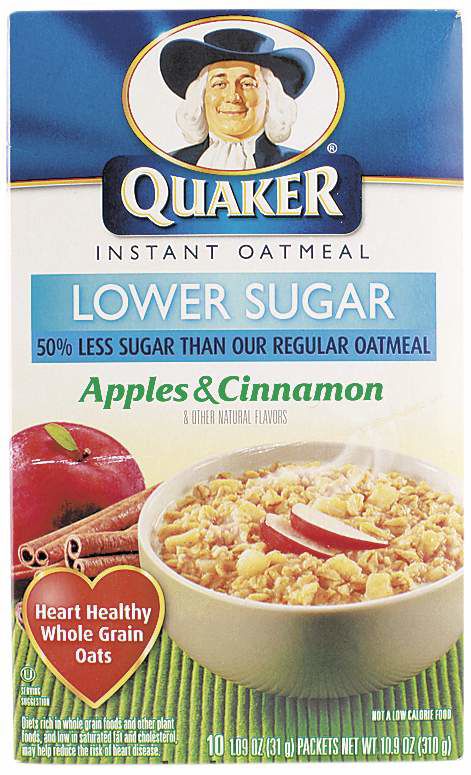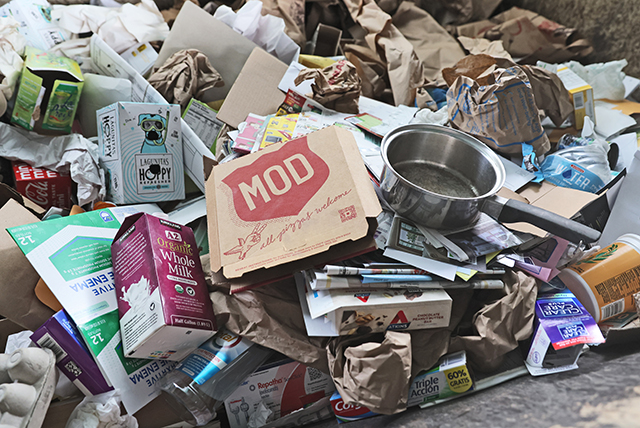Hard to miss with hot cereals
Published 4:00 am Thursday, November 19, 2009

- Hard to miss with hot cereals
Wintertime often conjures up nostalgic memories of a bowl of steaming oatmeal before heading out to play in the snow. Mom was so right.
Hot breakfast cereals can be among the most sensible and nutritious breakfast choices, as long as you keep certain rules in mind.
Trending
“The first thing I’d look for is, is it whole grain?” said Eris Craven, a registered dietitian with Bend Memorial Clinic.
Almost all hot cereals are whole grain. Only a few products, such as Cream of Wheat, Cream of Rice and Malt-o-meal are not. And some of those come in whole grain varieties as well. To be sure, check the ingredients list for the word “whole.”
“Bran is a fiber-rich outer layer of the grain kernel, so I would count bran as a whole grain, too,” Craven said.
Whole grains slow the digestion of foods because of their fiber content. Craven cautioned that you may want to avoid isolated fibers added by manufacturers just to boost the fiber content. Ingredients like inulin or maltodextrin aren’t necessarily bad for you, they just may not have the same benefit as whole grain fibers.
Oatmeal, which rules the hot breakfast cereal aisle, is a whole grain cereal that contains both soluble and insoluble fiber. Soluble fiber has been shown to slow digestion and help to reduce cholesterol. Insoluble fiber helps with regularity and colon health.
And regardless of what form it comes in, oatmeal is a good source of fiber.
Trending
“If you look at the fiber content of the one-minute oats versus the traditional oats, they’re the same,” said Lori Brizee, a registered dietitian with Central Oregon Pediatric Nutrition Consultants.
Take the Quaker line of oatmeals, for example. Both the Old Fashioned and the Quick Oats varieties have about 4 grams of fiber in a 1-cup serving. Even the Quaker instant oatmeal packets included 3 grams of fiber in a -cup serving. (Men younger than 50 should get about 38 grams of fiber per day, women about 25. Recommendations are a bit lower — 30 and 21 grams — for older men and women.)
Both rolled oats and steel cut oats have the same amount of fiber as well, they’re just processed a bit differently giving them a different texture.
The problem with instant oatmeal, Brizee said, is its high sugar content. Quaker’s flavored instant oatmeal has about 13 grams of sugar per packet, Safeway’s equivalent has about 12 grams of sugar.
“That’s 2 teaspoons of sugar in a pretty small serving size,” Brizee said.
Instant oatmeal is often higher in sodium as well — 80 milligrams in a packet of Quaker Original instant oatmeal compared with no sodium in the traditional or quick oats varieties.
If plain oatmeal is just too plain for your tastes, Brizee recommends adding some fruit, nuts or other types of flavoring.
“I have no problem putting a little sugar on it, (if) you just limit the sugar,” she said.
Luann Lehnertz, a registered dietitian with St. Charles Redmond, said supplementing oatmeals with fruits and nuts can also help make it a more lasting meal. Many of her clients complain that they’ll eat a bowl of hot cereal and two hours later they’re hungry.
“That’s because all it is, is a quick burning fuel,” she said. Even with its natural fiber, oatmeal is mainly carbohydrates and won’t keep you feeling as full as proteins and fats will.
By adding some additional fiber, say a tablespoon of ground psyllium, some nuts or flax seed for healthy fats, and maybe even a little protein powder, you can create a longer-lasting, more rounded meal.
“You’ve got a full meal deal — carbs, fat, protein and fiber,” she said. “That’s going to last them a lot longer.”
She does caution that unlike cold cereals, which are fortified with things like riboflavin, niacin, thiamin and folic acid, hot cereals don’t have any of those additions.
“I think then you have to look at the rest of your diet because you can get those in breads and other products,” she said. “If you’re eating mostly unprocessed foods, just be aware those things aren’t fortified.”
Craven also recommends ignoring the marketing on the front of the box. Oatmeals that tout a weight control or heart health claim don’t provide any additional benefit over regular oatmeal.
“Because of the marketing hype, you’re assuming that it’s healthier,” Craven said, “where it’s no better than any of the other instant oatmeals.”
If you’re not an oatmeal person, there are other varieties of hot cereals that are good choices. Craven recommends Bob’s Red Mill Muesli, which gets its sweetness from dried fruit rather than added sugar. Lehnertz recommends Zoom, a whole grain, hot wheat flakes cereal that can be hard to find.
The cereals such as Cream of Wheat or Malt-o-Meal, with little fiber, won’t offer much lasting power on their own.
“You’re just getting a lot of carbohydrates, a lot of starch, without the really good healthy stuff,” Brizee said.
She recommends trying other types of grains that are not traditionally thought of as breakfast foods.
“Heat up some leftover brown rice or quinoa, add a little milk and some sugar on it, and you have cereal,” she said.
Hot cereals are also a sensible choice from a financial perspective, she said.
“The really nice thing about hot cereals is they’re cheap,” Brizee said. “Compared to cold cereals, you can really lower the cost.”








